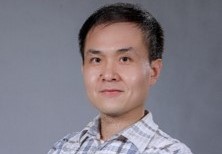Title: USING SINGLE-CELL AND SPATIAL TRANSCRIPTOMES TO UNDERSTAND CELL FATE DECISIONS DURING EARLY EMBRYO DEVELOPMENT Invited Speaker: Dr. WANG Ran Associated Professor, Center for Excellence in Molecular Cell Science, CAS 2017, Ph. D, Shanghai Institute of Biochemistry and Cell Biology, CAS Postdoc, Cancer Research UK Cambridge Institute, University of Cambridge European Molecular Biology Laboratory, European Bioinformatics Institute Date: April 25, 2023, 10:00-11:20 AM Location: Conference Room #2, 1st fl, building 2, 115 Jinzun road Abstract: USING SINGLE-CELL AND SPATIAL TRANSCRIPTOMES TO UNDERSTAND CELL FATE DECISIONS DURING EARLY EMBRYO DEVELOPMENT The blueprint of lineage segregation of early mouse embryo is established during gastrulation in which progenitors of various cell fates are regionalized and patterned in specific embryo locations. Despite the central importance of this period of mammalian development, we currently lack a comprehensive understanding of the underlying developmental trajectories and molecular processes, principally because research efforts either employed in vitro systems, focused on small numbers of genes, or limited the number of developmental stages or cell types that were studied. Single-cell mRNA sequencing has emerged as a powerful method to simultaneously measure cell-to-cell expression variability of thousands of genes. This technique has enormous applications in stem cell and developmental biology. However, the spatial information has been lost during the isolation of single cells. Previous spatial mapping of single cells requires the prior knowledge of location landmarks, which is often missing in many particular contexts. Here, we study the regulatory landscape of gastrulation by combining single-cell RNA-seq (A total of ~50,000 single cells isolated at E6.5, E6.75, E7.0, E7.25, E7.5) and geographical position sequencing (Geo-seq) technique, and we report a de novo identification of spatial coordinates and a method to enable retrospective locating of single cells to their origins. Our work provides insights into the exit from pluripotency and priming for differentiation, and the emergence of regulatory networks associated with cell fate decisions. Finally, we reconstruct the spatio-temporal roadmap of gastrula mouse embryo in single-cell resolution. This result uncovers the cell migration trajectories and molecular processes associated with lineage segregation. |



